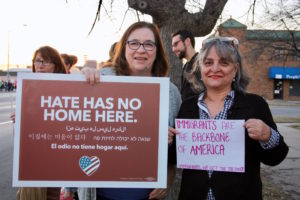 We witnessed an attack on our Capitol and on our democratic process last week. This act was intended to disrupt our democratic process. This act also revealed very publicly the deep and historically long chasm of racism in our country.
We witnessed an attack on our Capitol and on our democratic process last week. This act was intended to disrupt our democratic process. This act also revealed very publicly the deep and historically long chasm of racism in our country.
It was a broad coalition of extremists who congregated at our nation’s Capitol and at statehouses across the country, including our Nebraska State Capitol. While proclaiming their support for the president, these extremists carried flags and banners, had tattoos, and wore clothing with identified hate symbols, some as recognizable as the swastika, the Yellow Gadsen flag or the Confederate flag and other symbols associated with more recent groups like Qanon and The Proud Boys.
As disturbing as it was witnessing the violence that put our democracy at risk and the continuing threats that undermine our governance and safety, this is not new. This unrest, fueled by racism, nativism, and American Exceptionalism, has been a part of our history since European explorers landed on the shores.
As Americans, we have become tolerant, letting those sentiments simmer, but we can no longer be tolerant. Most of us are uncomfortable talking about race. We have been taught not to talk about such things. But we can and we must.
Hate crimes, an attempted crime, or a hate incident – threats, assault, and violence, or graffiti that is targeted because of race, religion, disability, gender, or sexual orientation – should be reported. Take photos if possible, write down details taking note of any words said or symbols. Even if these words or symbols don’t make sense to you, they may be helpful to the police.
Resources to learn more about hate groups:
-
- Southern Poverty Law Center, a non-profit organization monitoring the activities of domestic hate groups and other extremists.
-
- Anti Defamation League tracks hate crimes, lists know hate symbols on their website including learning materials on hate crimes, bullying, and discrimination.
- Decoding Hate Symbols Seen at the Capitol Insurrection. From Viking hammers to flags of fictional countries, National Geographic breaks down the origins and evolution of hate symbols.
Additional resources in multiple languages:
-
- Crímenes de Odio en mi Comunidad (Spanish)
-
- Acoso (Spanish)
-
- Faduusha (Somali)
-
- ف جرائم الكراهية ي مجتم ي ع (Arabic)
-
- المضايقة (Arabic)
